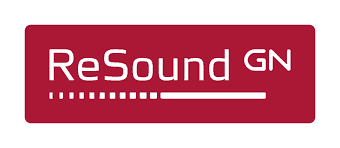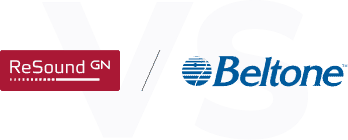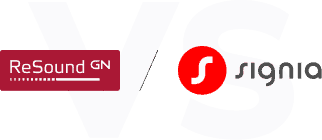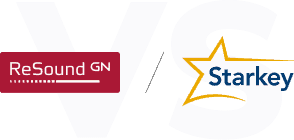ReSound Hearing Aid Reviews From an Audiologist in 2025
ReSound is a go-to brand for our audiologist in his clinical practice, thanks to the brand’s rechargeable devices, smartphone compatibility and useful accessories.
SeniorLiving.org is supported by commissions from providers listed on our site. Read our Editorial Guidelines
ReSound has been in the hearing aid business since 1943. The Denmark-based company is part of the GN Group, an audio services company. It offers seven hearing aids that come in various styles, from in-the-canal (ITC) to behind-the-ear (BTE). There are also solutions for all levels of hearing loss, from mild to profound.
ReSound has several accessories that connect to their hearing aids, plus apps you can use to adjust and control them. For this year’s review, I’ll go through all of those options and explain why I recommend the company when patients are interested in smartphone compatibility or a remote microphone. I’ll also compare ReSound with some of the best hearing aid providers I’ve tested.
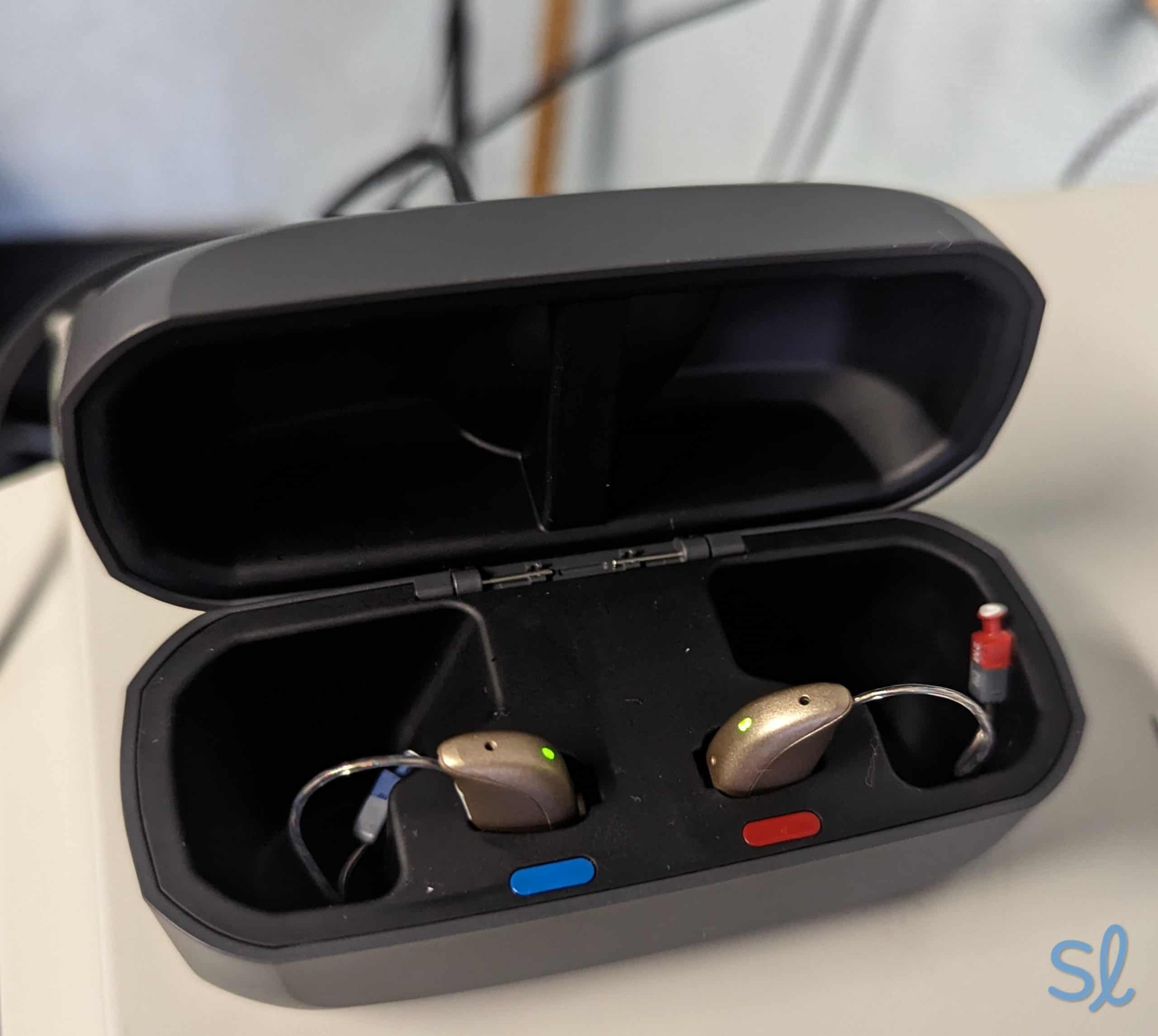
Testing out ReSound BTE hearing aids

On a Tight Budget? Check Out Affordable Alternatives to ReSound
ReSound offers an array of high-quality hearing aids for seniors. You can opt for basic hearing aids, or if you’re willing to pay more, you can go with one of ReSound’s high-end products that offer all the bells and whistles. But if you're looking for a more budget-friendly hearing aid or want to weigh your options, check out our picks for the best affordable hearing aids.
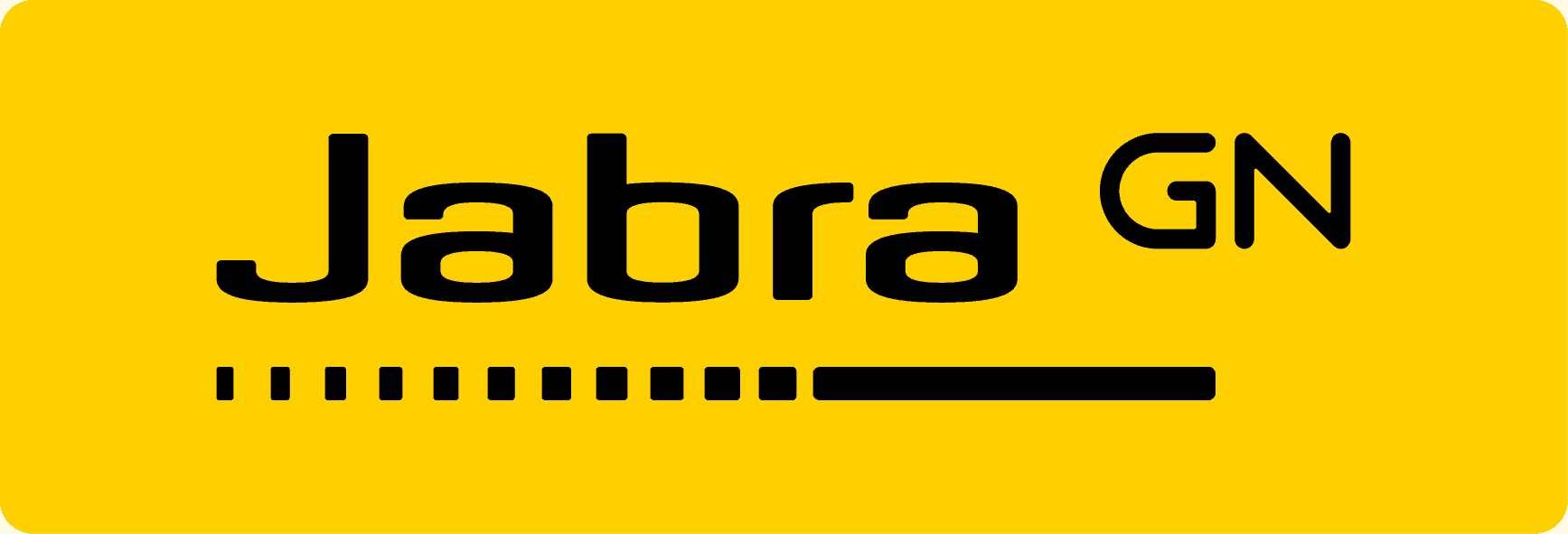


ReSound Technology
FYI: You can take a free online hearing test at ReSound to help decide the best hearing aid technology for you. The test takes just three minutes to complete.
Before getting into ReSound’s product line, let’s discuss their technology. In addition to the early use of multichannel compression, ReSound was the first hearing aid to use the 2.4 GHz wireless platform. This tech provides a more expansive range and lower power consumption than traditional Bluetooth. It’s also the foundation of the next generation of Auracast Bluetooth LE (low energy) streaming technology (more on this technology later!).
ReSound offers this for all technology levels and styles of hearing aids. This capability allows ReSound hearing aids to connect to smartphones, accessories and public audio communication systems in places such as airports and lecture halls.
It also allows hearing aids to share information. This “ear-to-ear” communication synchronizes volume and program changes and optimizes directional microphone settings. In the real world, it reduces listening effort in the presence of background noise.
ReSound’s tiers are labeled as 9 (premium), 7 (midrange) and 5 (entry-level). The devices described below are available in mini receiver-in-canal, receiver-in-canal (RIC), in-the-ear (ITE) from full shell to completely-in-canal (CIC), and ReSound’s unique Mic-in-Helix (MIH) design.
Pro Tip: Want to learn more about the different types of hearing aids, from BTE to ITC? Visit our guide to hearing aids for a closer look.
With the MIH hearing aid, the main part of the device hides in your ear canal. The hearing aid microphone is worn within the curved groove of your ear, still out of sight. A small transparent tube sends sound from the microphone to the component in your ear canal. This product, unique to ReSound and shared with sister company Beltone, places the microphone in the helix of the outer ear. This position is proven to improve speech understanding amid background noise.
ReSound and Beltone are the only brands that offer MIH-style hearing aids, but the semi-remote microphone technology is also found in Advanced Bionics’ cochlear implant speech processors, called T-Mic, which allow for directional microphone benefits in small spaces.
ReSound offers standard and “fun” colors for their RIC and BTE hearing aids, including three versions of digital camouflage specifically designed for the Veterans Health Administration.
Did You Know? Tinnitus is the No. 1 disability among veterans.1
ReSound RIC and BTE models
ReSound offers a wide range of hearing aid models for all levels of hearing loss, similar to other top providers, such as Widex, Beltone and Starkey. Below, I’ll cover some of ReSound’s most popular models.
Did You Know? One-third of people over 60 have hearing loss and half of people over age 85 have it,2 but many older adults with hearing loss don’t wear hearing aids. Common reasons include cost, hearing evaluations being difficult to find, their association with being old and underestimating their hearing loss.3

ReSound Custom Products
ReSound LiNX Quattro
Quattro is one of ReSound’s top-tier designs. It is the third iteration of a design first introduced in 2014 as the LiNX. It was the first hearing aid made for iPhone. Since then, ReSound has fine-tuned this proven platform. The Quattro is available in all form factors, including a superpower BTE called the Enzo Q for people with severe to profound hearing loss. The Quattro line can use standard zinc-air batteries or a rechargeable lithium-ion system.

ReSound LiNX Quattro
ReSound Nexia
Nexia is a rechargeable receiver-in-ear (RIE) hearing aid for people with hearing loss ranging from mild to profound. Nexia is top rated for hearing conversations in noisy places. The devices are lightweight and small, making them comfortable for all-day wear. They also hold a charge for 30 hours.
Nexia is ReSound’s first hearing aid to work with Auracast Bluetooth streaming technology. Auracast lets you stream audio directly into your hearing aids from your own devices. It also lets you stream public audio sources in places such as concert halls, bus terminals and airports.
Through ReSound’s app, you can activate the Hear in Noise program that lets you fade background sounds to a comfortable level while keeping directional focus on the person speaking in front of you. The value of this for my patients is more than just comfortable hearing; it’s also a way to remain connected (or reconnect) with people in social and business situations.
Did You Know? Hearing loss among seniors can lead to more falls due to spatial unawareness and declining inner ear function.4
ReSound Accessories
ReSound offers several accessories and apps to support its hearing aids. All these accessories operate within a 2.4GHz wireless. That is a very robust and long-range (about 60 feet in most buildings) way to overcome additional challenges of distance, reverberation and background noise.
ReSound Micro Mic
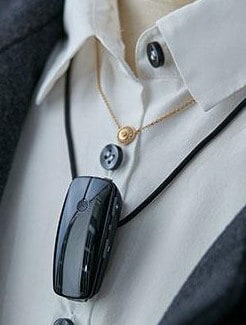
ReSound Micro Mic
These small portable microphones allow you to hear what people are saying when they speak into them. The sound streams directly into your hearing aid. The official range is 80 feet, but I’ve found that they are very reliable up to 60 feet, depending on certain environmental factors.
The Micro Mic has a directional microphone and accelerometer that senses if the microphone falls and mutes it before the “clunk” of the floor happens.
ReSound Multi Mic
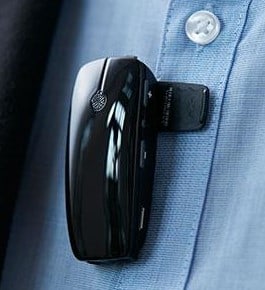
ReSound Multi Mic
The Multi Mic, in my experience, offers some of the best value in hearing assistive technology. In addition to the features above, it allows for manual microphone sensitivity adjustment from omnidirectional to ultra-narrow. The accelerometer automatically switches to “Omni” when placed on a flat surface. This device is one of my favorite hearing system components because you can use it as a hub for other technologies.
There are two sockets on the bottom of the Multi Mic: one for a standard 3.5 mm audio cable (included) and a three-hole Euro jack. They allow you to connect other audio devices to the Multi Mic and stream to your hearing aids. I’ve used this feature on ReSound hearing aids to allow folks to listen to MP3 players or hearing assistive devices in theaters or, for students, take advantage of FM systems like the Phonak Roger using a Euro plug.
As if all that wasn’t enough, the Multi Mic also has a telecoil to connect to wide-area “hearing loops” found in auditoriums and houses of worship. That is great because even if you have a smaller hearing aid without a telecoil, you can use this very effective technology for combatting distance, reverberation and background noise.
ReSound TV Streamer 2 and ReSound TV Streamer+
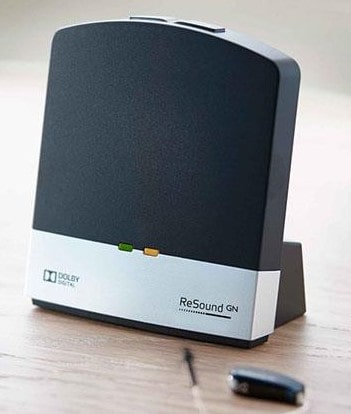
ReSound TV Streamer 2
These devices connect to a television or other audio-producing device and stream the sound to your hearing aid. It is very easy to connect and supports both analog and digital inputs. Streaming reduces the negative effects of distance and reverberation on speech understanding. For those with different TV tastes than their partners, MediaStreamer 2 allows you to hear clearly when the TV speakers are very low or even muted.
ReSound Phone Clip+
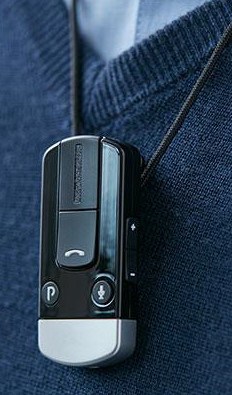
ReSound Phone Clip+
The current line of ReSound hearing aids stream to iPhones, some iPads and some Android devices. If you use an older Android model, the Phone Clip+ converts the Bluetooth signal from your phone to the 2.4 GHz signal of your hearing aids. It allows you to hear in both hearing aids hands-free and also controls the basic functions of the hearing aid. That means you can stream music and phone calls straight from your phone.
Pro Tip: ReSound offers a great variety of hearing aids for all levels of hearing loss. If you’re looking for innovative health and safety features, however, you may want to consider other providers like Starkey that offer fall detection and health-tracking features. Check out our Starkey review to learn more.
ReSound Remote Controls
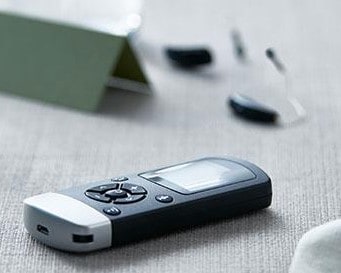
ReSound Remote Controls
With this small remote, you can adjust the hearing aid volume and switch streaming devices. That is extremely helpful for those with dexterity problems or who require assistance in daily living, as it allows a caregiver to easily control the hearing aids.
Need Help Finding the Right Hearing Aid?
Answer a few easy questions to find the hearing aid that’s right for you.
Smartphone and Smartwatch Apps
ReSound offers several very helpful applications for both Android and iOS (Apple) portable devices. They range from basic remote controls to sophisticated tinnitus treatment programs.
ReSound Control App
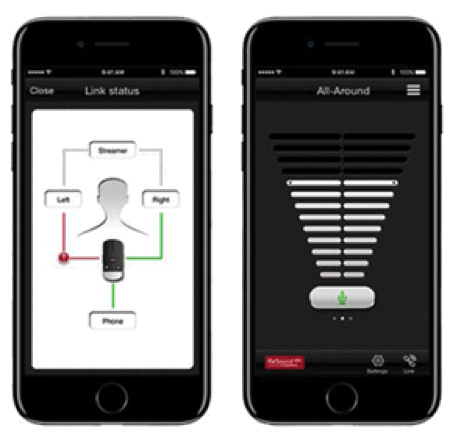
ReSound Control App
The app functions similarly to the ReSound Remote Controls, only on your smartphone. The easy-to-use interface is great for not only those with dexterity limitations, but also those who may need assistance with their hearing aids, including those with memory loss.
ReSound Smart 3D App
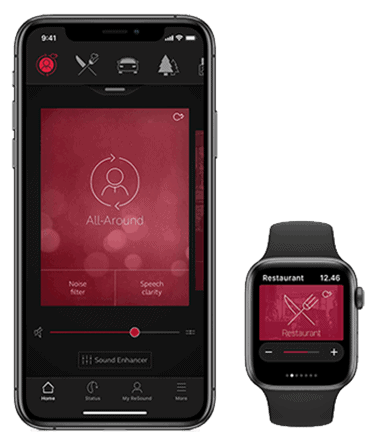
ReSound Smart 3D App
The app is like the command center for your hearing aids and accessories. In addition to basic volume and program control, the app allows for fine-tuning noise reduction and pitch control.
If you enable location services, you can drop a pin where you’ve fine-tuned, and the app will automatically return the devices to that optimized setting when you arrive at that place.
I really like the ReSound app, because it provides multiple ways to access programs and features (buttons, swipes, etc.) It shows that the development team is plugged into the non-hearing aid app user experience. That helps more tech-savvy folks begin using the app and helps new users find a user interface that works for them.
FYI: Do you want to know if you’re wearing your hearing aid correctly? Just use Check My Fit with a quick ear selfie. Find Check My Fit in the ReSound Smart 3D app. Here’s a video guide from ReSound.
ReSound Tinnitus Relief App
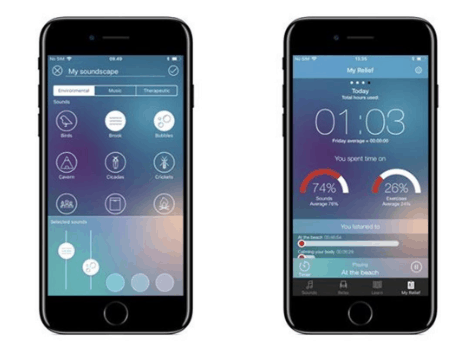
ReSound Tinnitus Relief App
Tinnitus affects 15 percent to 20 percent of people, and it’s especially common among older adults.5 The Tinnitus Relief App is logical, easy to use and based on solid tinnitus research similar to the Progressive Tinnitus Management program developed by the Veterans Administration. ReSound’s tinnitus features are excellent, but I recommend Widex if tinnitus management is one of your top reasons for purchasing hearing aids. Visit our Widex review to learn more.
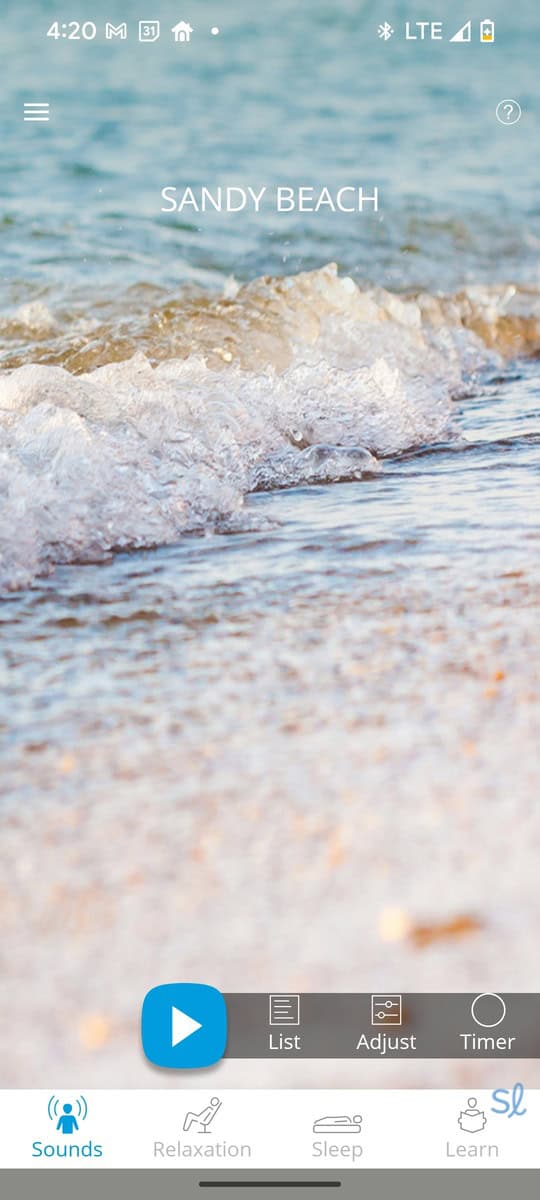
Many providers for severe hearing loss offer mobile apps for tinnitus management, including the ReSound Relief app.

Additional Services
ReSound offers warranty services all over the world. In addition, your hearing care professional can enable Assist Live. This set of tools allows you to report problems to your fitter, who can either send you possible changes or offer a live virtual face-to-face appointment. For many people, an option for remote care is a huge plus. Many over-the-counter companies I’ve reviewed, such as Lively, offer extensive remote support. I’m glad that medical-grade brands like ReSound are also starting to offer remote care.
ReSound vs. the Competition
ReSound offers an array of high-quality hearing aids for seniors. You can choose basic hearing aids or, if you’re willing to pay more, go with one of ReSound’s high-end products that offer all the bells and whistles. If you're looking for a more budget-friendly hearing aid or want to weigh your options, check out our picks for the best affordable hearing aids.
ReSound vs. Phonak
Phonak offers 16 hearing aid devices in more than 100 countries worldwide. Their portfolio of hearing aids is for all types of hearing loss, from mild to profound, and includes BTE, ITE, RIC and one-sided models. The company’s devices, however, come at a higher price point.
ReSound vs. Jabra
Jabra offers over-the-counter hearing aids for mild to moderate hearing loss. We voted Jabra our top pick for the best overall value. They have three years of loss and damage coverage and follow-up care with premium packages. Jabra also gives you a 100-day risk-free trial. The company offers only BTE models, however, and they’re not designed for severe to profound hearing loss.
ReSound vs. Eargo
Eargo provides CIC devices. They offer a 45-day risk-free trial, as well as financing for up to 36 months. They have a warranty that covers one-time loss or damage, and lifetime remote support by a team of more than 30 professionals. Their devices are not designed for severe to profound hearing loss though.
Compare ReSound to Other Providers
Our Methodology
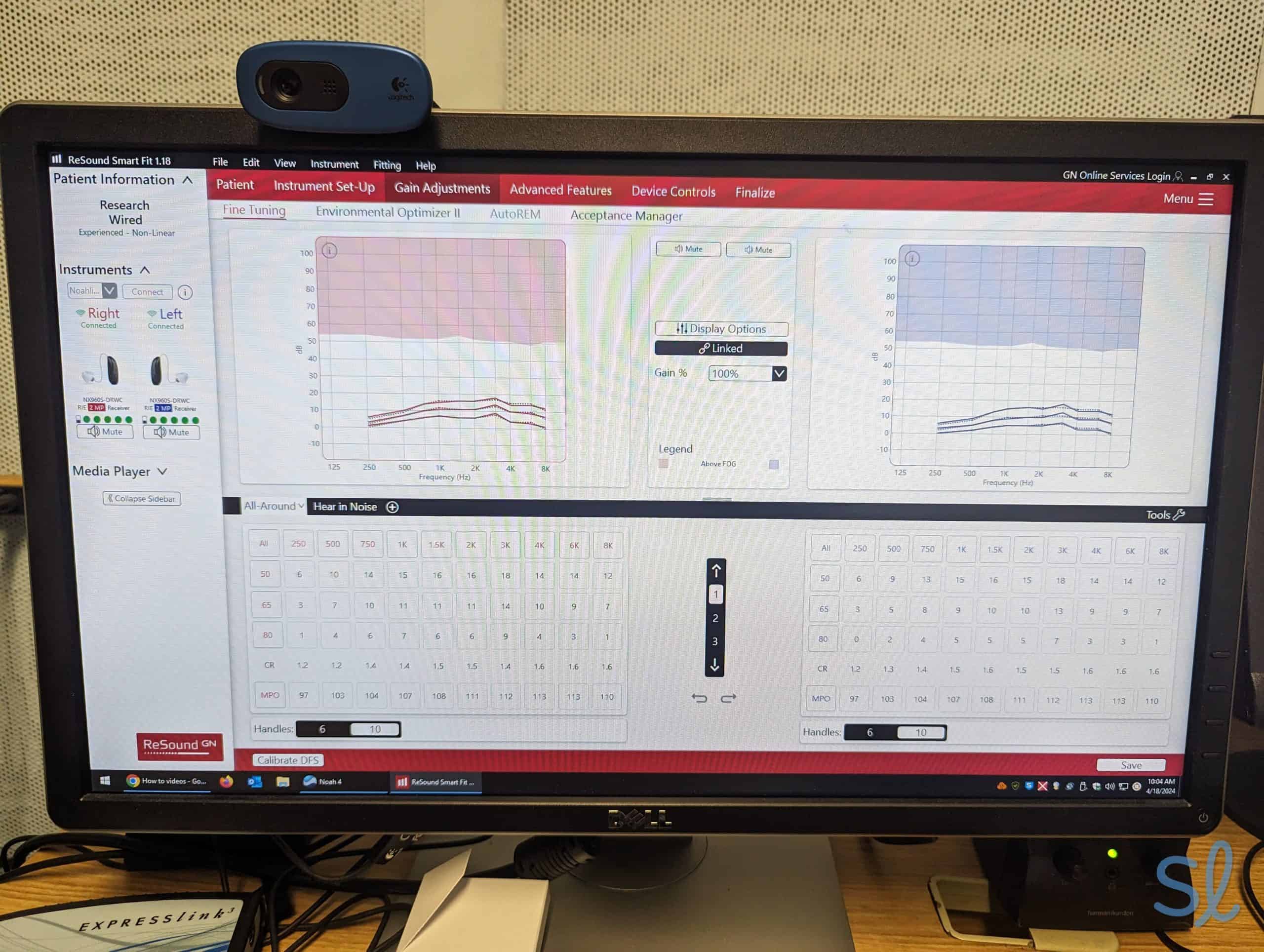
Our resident audiologists have tested and customized ReSound hearing aids for their patients, as seen in this photo.
Our tech experts evaluated ReSound hearing devices, spending more than 50 hours testing the devices. Factors evaluated included cost, styles, accessories, fit, battery type and life, and performance. We also consulted with resident audiologist Dr. Brad Ingrao about his experience with the brand. Below are some of the factors we researched.
- Price and financial considerations: We assessed the overall expense, factoring in additional components and maintenance, the availability of insurance or discount plans, payment plans, and the device’s cost-effectiveness.
- Technology features: We examined whether the device included sound filtering, targeted microphones, wireless connectivity, adaptive settings and artificial intelligence capabilities.
- Trial period and refund options: Older adults may be reluctant to use a hearing aid, making trial offers a valuable advantage. For companies that provided the option, we assessed the trial duration and refund and return policies.
- Wearability and design: We explored various hearing aid styles, including BTE, RIC and ITE models, focusing on prolonged use, overall fit, comfort, and whether they were subtle, lightweight and unobtrusive.
Bottom Line
ReSound has a long history of innovation, quality and value. In my clinical practice, they are among my top three go-to brands, particularly with patients who also need hearing assistive technologies such as media streaming and remote microphones. As the first out of the gate with iPhone compatibility, I typically recommend ReSound first for people who need or want that feature.

The ReSound lab does a fantastic job with hard and soft materials for patients who require or prefer a custom ear mold. I’m very comfortable saying that people looking for a high-quality device and supportive company should put ReSound on their short-list. If you are still trying to decide which hearing aids are best for you, watch my video below on tips for choosing the right hearing aid based on my decades of experience as an audiologist.

Take Our Free Online Hearing Test
Wondering if you have hearing loss?
Grab your headphones and get an evaluation in minutes.
Frequently Asked Questions
-
Can ReSound hearing aids be bought online?
No, you can’t buy them online. Visit your local hearing care professional to get fitted for and buy a ReSound hearing aid. Locate a professional near you by visiting the website or calling 888-735-4327.
-
Are ReSound hearing aids waterproof?
Only some ReSound hearing aids are waterproof. It’s best not to wear your hearing aids while in the shower, swimming or sitting in a sauna. Keep them dry to avoid damage.
-
What’s the lifespan of ReSound hearing aids?
ReSound hearing aids are built to last about five years.
-
Which hearing aid should I choose?
The right hearing aid depends on your type of hearing loss, lifestyle, and technological and cosmetic requirements. A hearing care professional will recommend the best hearing aid and fit for you.
American Academy of Audiology. (2025). Seniors and Hearing Loss.
U.S. Department of Veterans Affairs. (2025). Hearing Loss.
News Medical Life Sciences. (2024). Say That Again.
Purdue University. (2024). Hearing Loss Leads to More Falls.
Mayo Clinic. (2022). Tinnitus.
